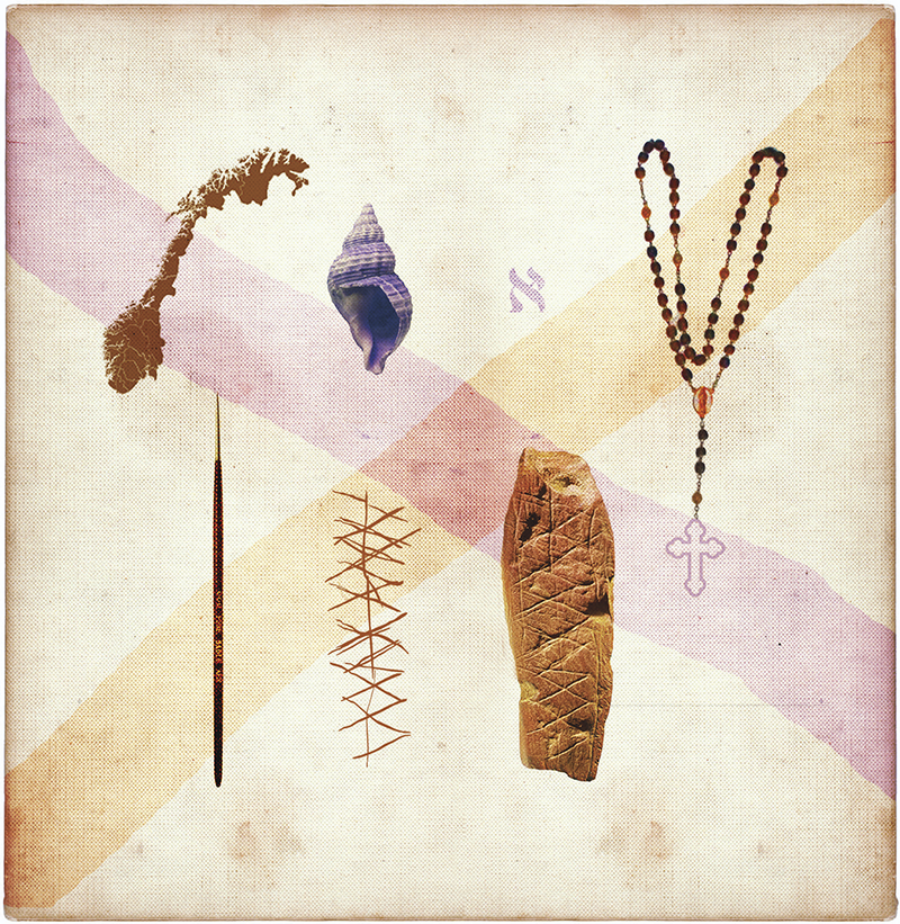
Illustration by Matthew Richardson
Discussed in this essay:
The Other Name: Septology I–II, by Jon Fosse. Translated by Damion Searls. Transit Books. 336 pages. $17.95.
I Is Another: Septology III–V, by Jon Fosse. Translated by Damion Searls.
Transit Books. 256 pages. $17.95.
Five million years ago, on the southernmost coastline of Africa, some two hundred miles from Cape Town, a cave was formed, most likely by waves hammering at the stone. Today, the mouth of the cave, called Blombos, yawns wide, one hundred feet above sea level and a few hundred feet from what is now the shore.…





























































































